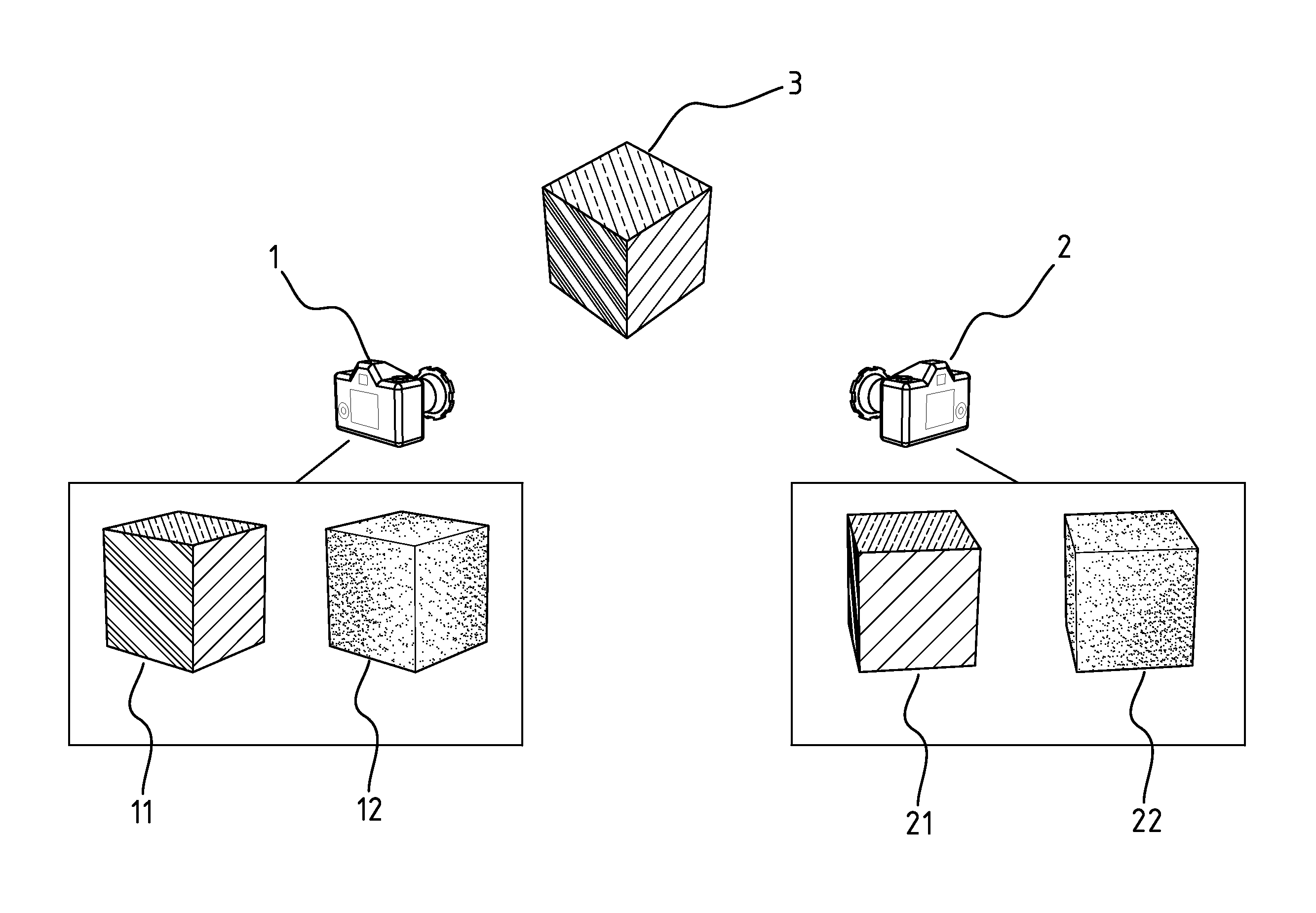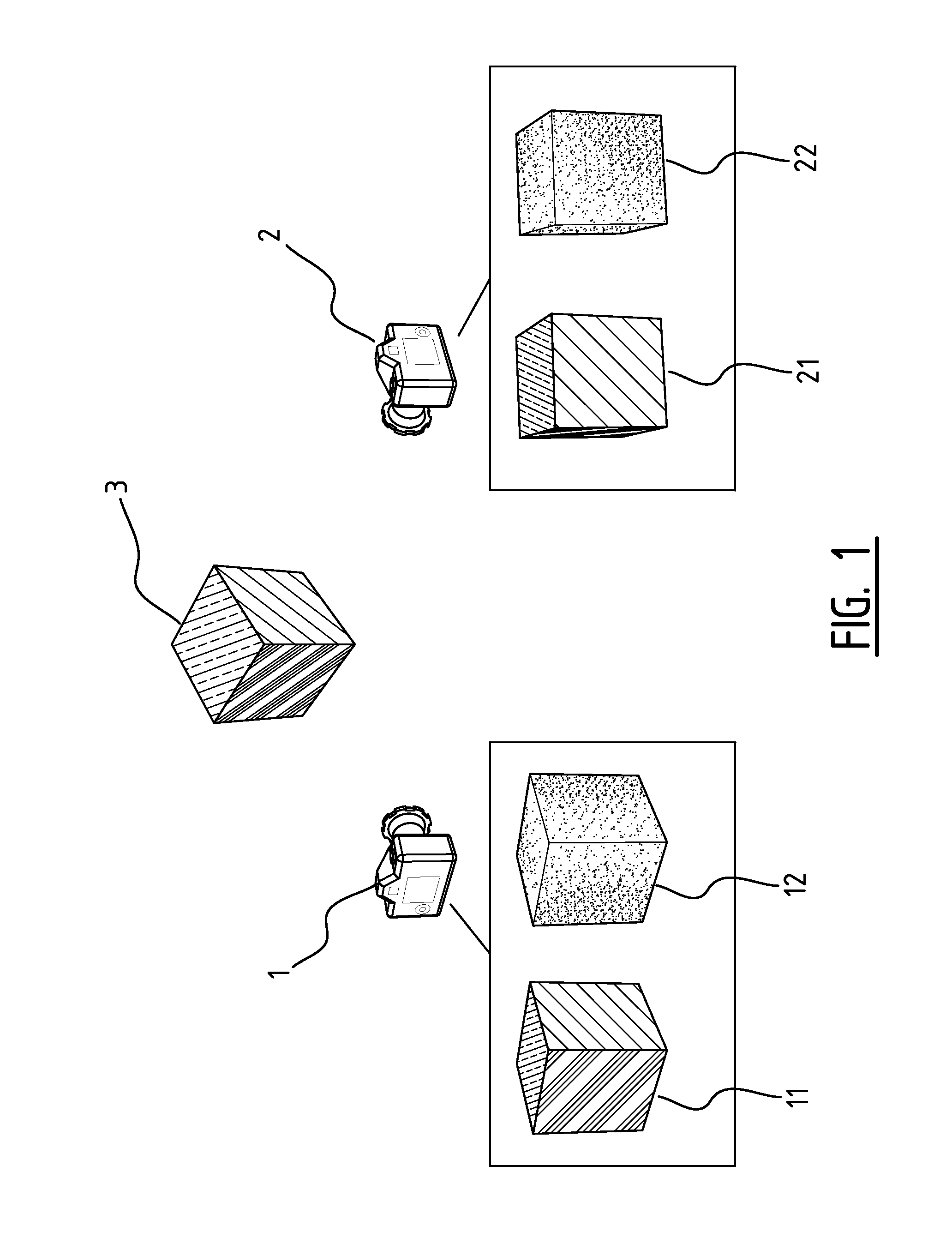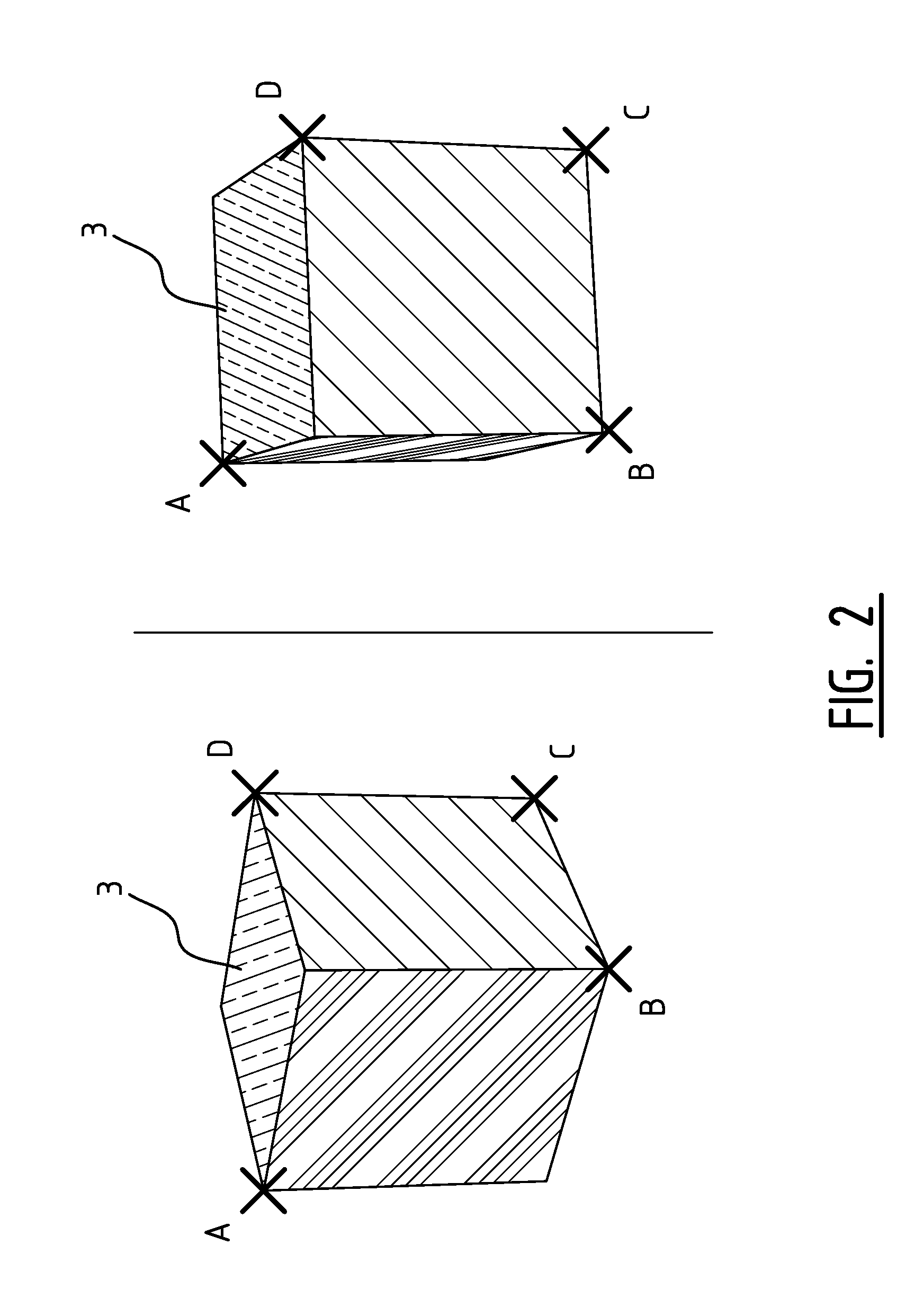Method for determining the relative position of a first and a second imaging device and devices therefore
a technology of imaging device and relative position, which is applied in the field of camera calibration techniques and devices, can solve the problems of slow and/or inconvenient solution, solution that does not allow camera calibration, and is difficult to support moving cameras while maintaining camera calibration, so as to reduce the necessary processing power
- Summary
- Abstract
- Description
- Claims
- Application Information
AI Technical Summary
Benefits of technology
Problems solved by technology
Method used
Image
Examples
Embodiment Construction
[0056]The above and other advantageous features and objects of the invention will become more apparent and the invention will be better understood from the following detailed description when read in conjunction with the respective figures.
[0057]The description of aspects of the present invention is performed by means of particular embodiments and with reference to certain figures but the invention is not limited thereto. Depicted figures are only schematic and should not be considered as limiting. E.g. certain elements or features may be shown out of proportion or out of scale with respect to other elements.
[0058]In the description of certain embodiments according to the present invention, various features are sometimes grouped together in a single embodiment, figure, or description thereof for the purpose of aiding in the understanding of one or more of the various inventive aspects. This is not to be interpreted as if all features of the group are necessarily present to solve a p...
PUM
 Login to View More
Login to View More Abstract
Description
Claims
Application Information
 Login to View More
Login to View More - R&D
- Intellectual Property
- Life Sciences
- Materials
- Tech Scout
- Unparalleled Data Quality
- Higher Quality Content
- 60% Fewer Hallucinations
Browse by: Latest US Patents, China's latest patents, Technical Efficacy Thesaurus, Application Domain, Technology Topic, Popular Technical Reports.
© 2025 PatSnap. All rights reserved.Legal|Privacy policy|Modern Slavery Act Transparency Statement|Sitemap|About US| Contact US: help@patsnap.com



